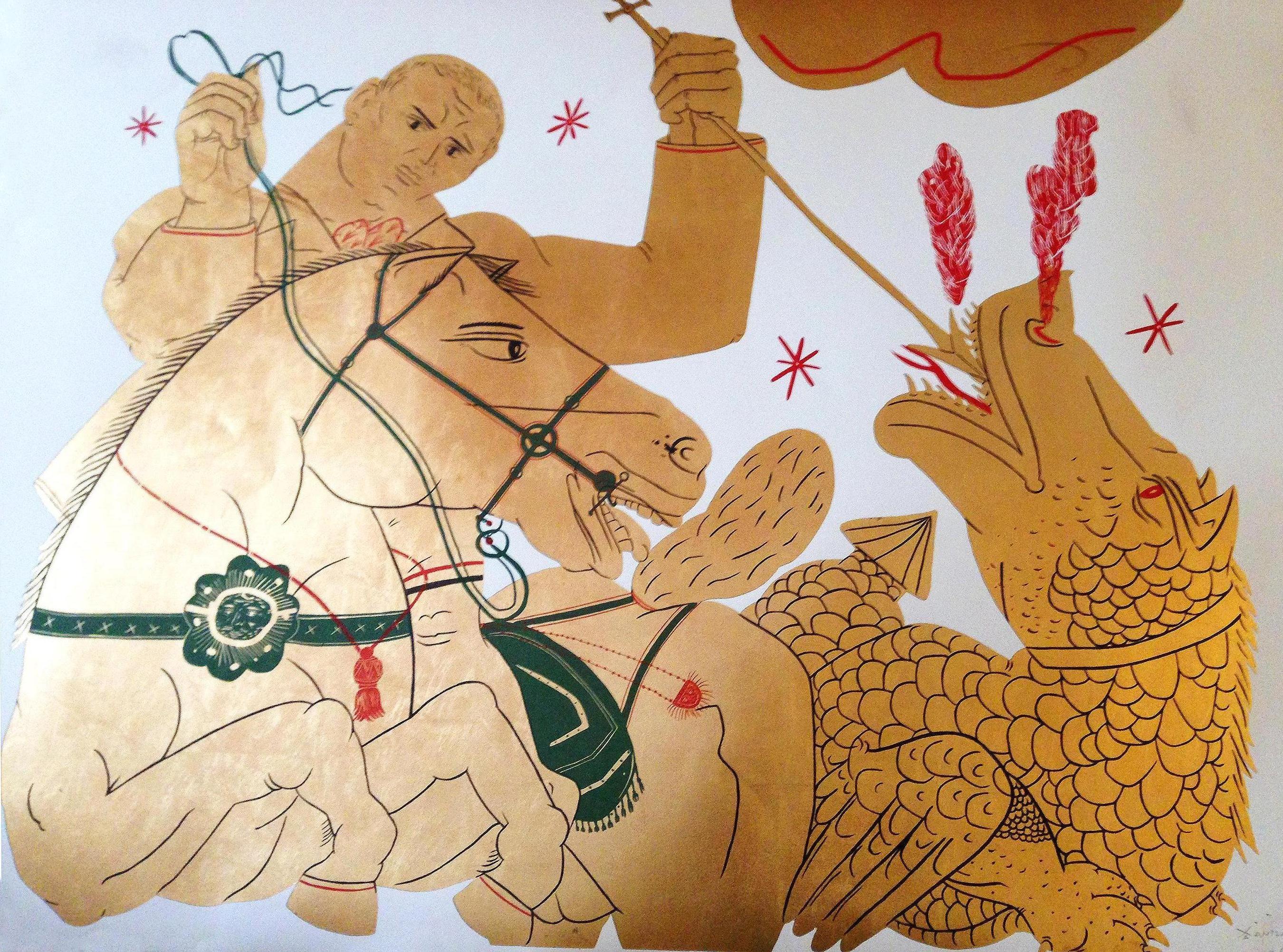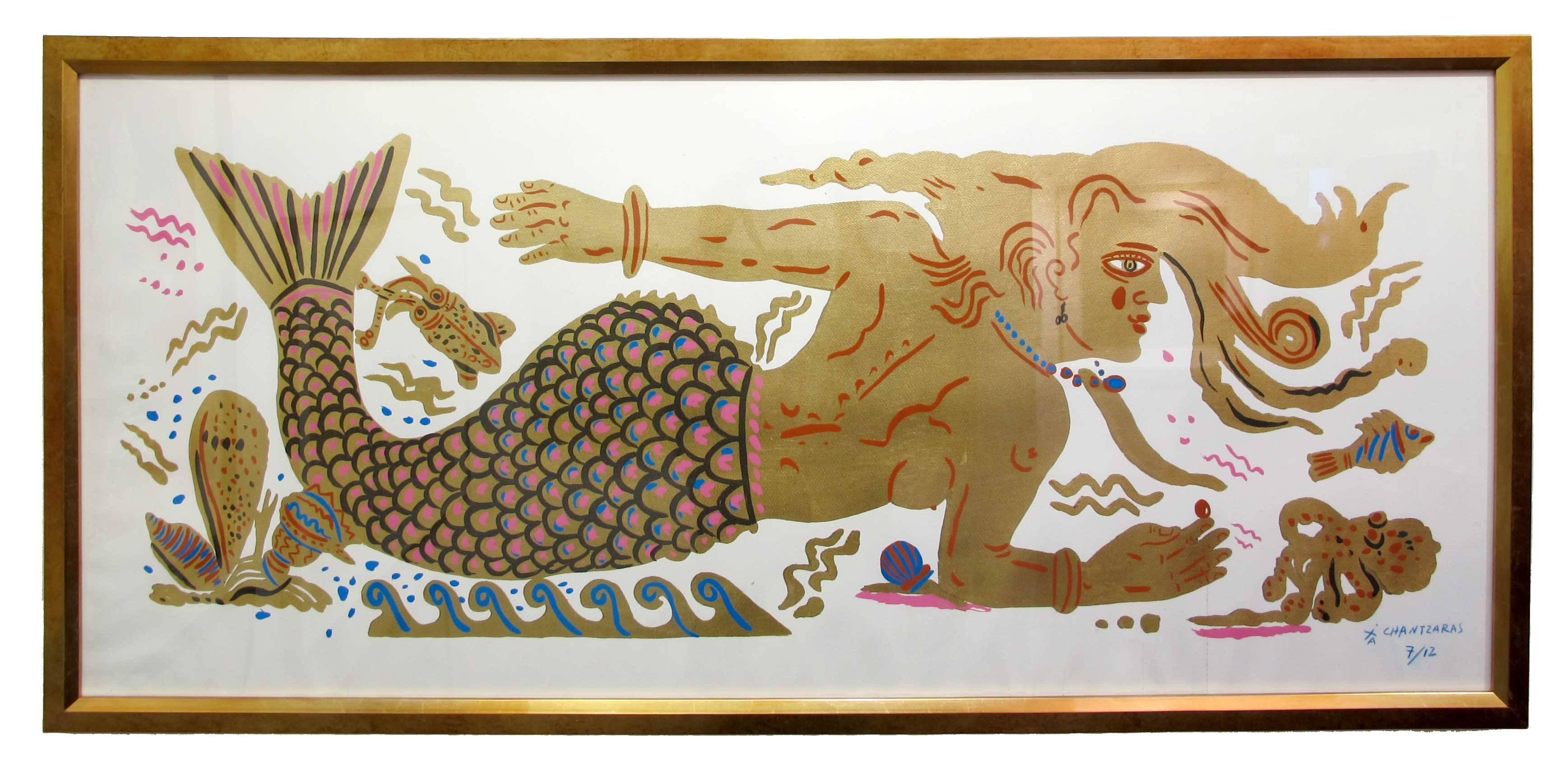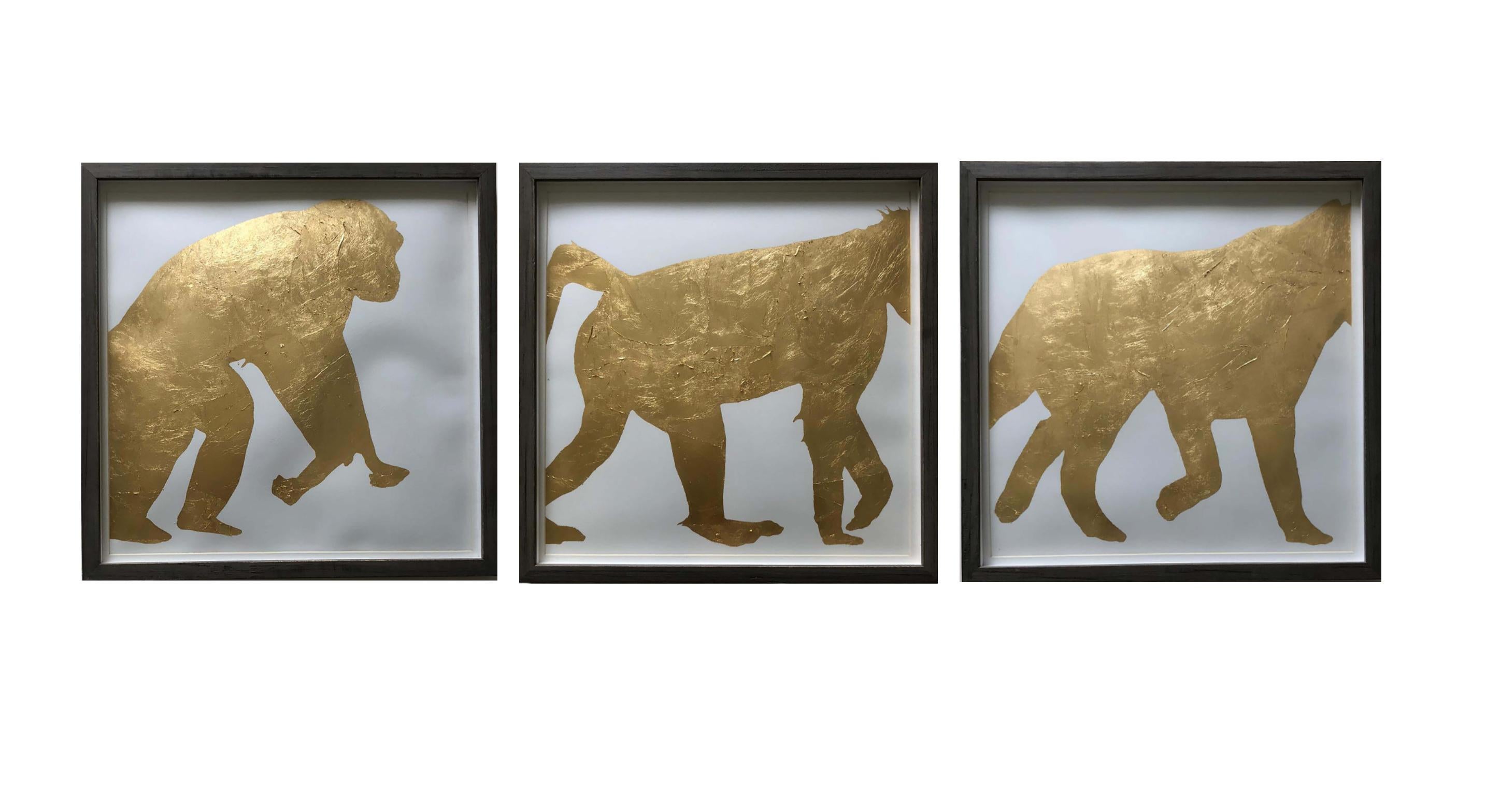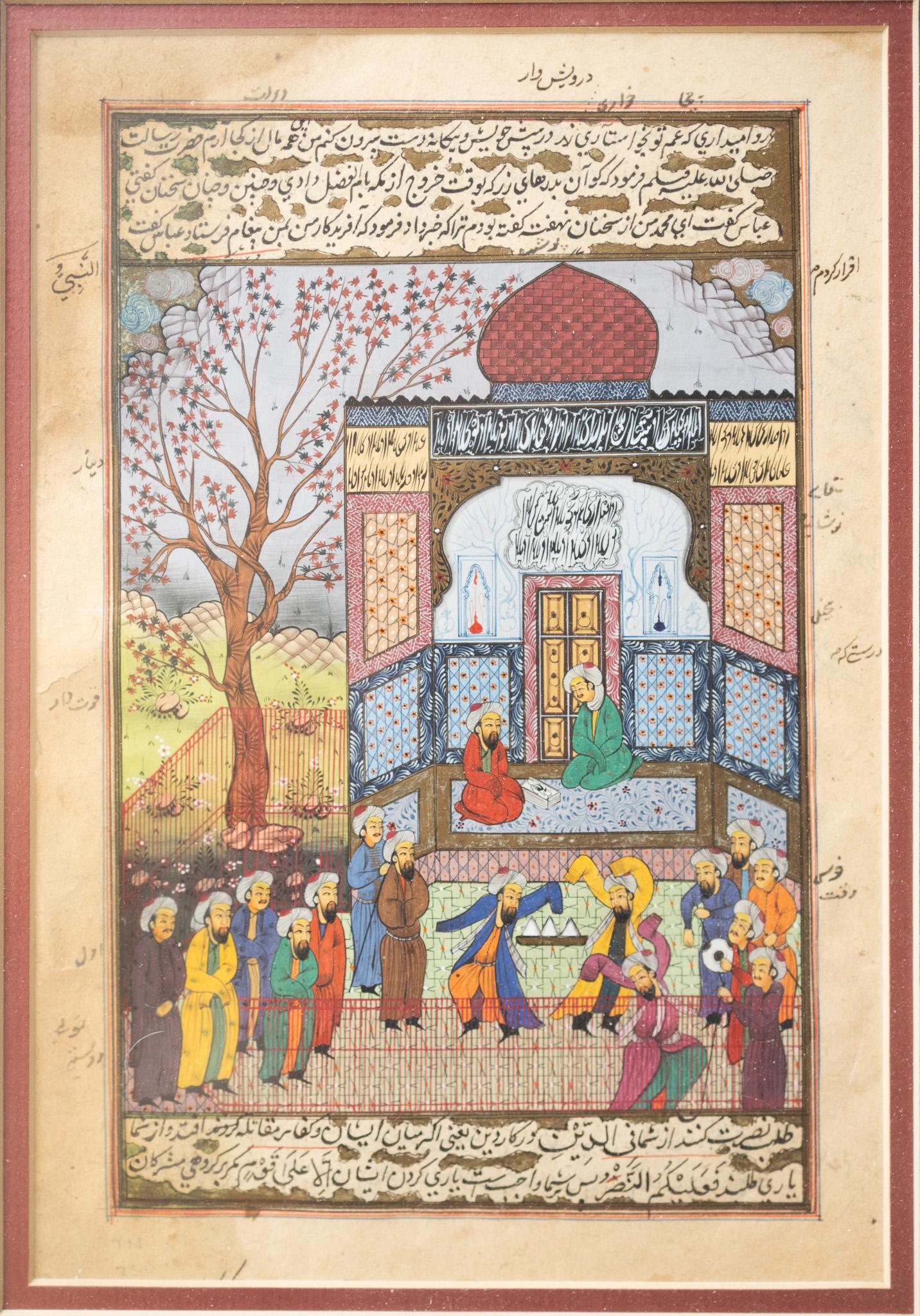Items Similar to Illuminated Manuscript
Want more images or videos?
Request additional images or videos from the seller
1 of 5
UnknownIlluminated Manuscript
About the Item
Illuminated manuscript with images of sailboats on the front and writing on the back, visible through the glass frame backing.
Image Size: 9.75" x 11.5"
Frame Size: 15" x 16.75"
- Dimensions:Height: 9.75 in (24.77 cm)Width: 11.5 in (29.21 cm)
- Medium:
- Period:
- Condition:
- Gallery Location:Austin, TX
- Reference Number:
About the Seller
5.0
Platinum Seller
These expertly vetted sellers are 1stDibs' most experienced sellers and are rated highest by our customers.
Established in 1964
1stDibs seller since 2019
88 sales on 1stDibs
Typical response time: 2 hours
- ShippingRetrieving quote...Ships From: Austin, TX
- Return PolicyA return for this item may be initiated within 3 days of delivery.
More From This SellerView All
- Illuminated ManuscriptLocated in Austin, TXIlluminated Manuscript featuring a group scene of a crowd of men. A few of them dance in the middle of the crowd surrounded by spectators. Two men sitting in a stage structure watch ...Category
20th Century Prints and Multiples
MaterialsGold Leaf
- "Happiness in the Air" Expressionist Landscape with WaterfallLocated in Austin, TXA colorful and idyllic expressionist landscape with a waterfall by Dominique Boisjoli. 38" x 26" Acrylic and Gold Leaf on PaperCategory
21st Century and Contemporary Expressionist Landscape Paintings
MaterialsGold Leaf
- Unicorn with a Golden WallBy Kelly FearingLocated in Austin, TXKelly Fearing (1918 - 2011) Title: "Unicorn with a Golden Wall" Medium: Mixed Media on Paper Dimensions: 18" x 12" (image) Markings: Signed LR FramedCategory
1970s American Modern Paintings
MaterialsGold Leaf
- Oil, Sand, and Gold Leaf on CanvasLocated in Austin, TXArtist: Daniela Nikolova Medium: Oil, sand, and gold leaf on canvas Size: 31.5" x 23.6"Category
21st Century and Contemporary Animal Paintings
MaterialsGold Leaf
- Oil, Sand, and Gold Leaf on CanvasLocated in Austin, TXArtist: Daniela Nikolova Medium: Oil, sand, and gold leaf on canvas Size: 19.6" x 13.7"Category
21st Century and Contemporary Animal Paintings
MaterialsGold Leaf
- "Pheasant Hunting" 19th Century EtchingBy Charles HuntLocated in Austin, TXEngraved by Charles Hunt after a painting by Francis Calcroft Turner, J.W. Laird Leadenhall Jr. Etching | 16.5" x 19.5"Category
1840s Prints and Multiples
MaterialsArchival Paper, Etching
You May Also Like
- Meriana (Bugle Lily)By Georg Dionysius EhretLocated in Florham Park, NJGEORGE DIONSYSIUS EHRET (1708-1770). Plantae Selectae.... Text by Dr. Christoph Trew. Drawn by Georg Dionsysius Ehret. Engraved by Johannes Jacobus and Johannes Elias Haid. Nuremberg, 1750-73. Hand-colored engravings. Titles highlighted with goldleaf. 100 plates. 19.5” x 13.5” Unframed. A supplement of 20 plates issued by B.C. Vogel in 1790. "The dominant influence in botanical art during the middle years of the 18th century." "One of the finest records of cultivated flowers..." "His accuracy and general excellence as a true botanical artist have never been equaled." Ehret’s praises have been sung throughout the centuries. While his training was in gardening, Ehret's true talents were in his art. Drawing the specimens from life in the garden's in which he labored won Ehret his employer's praise and his co-workers jealousy. Not only were his botanical portraits highly accurate in every technical detail, they reflected an awe-inspiring love of subject. A restless man, Ehret wandered from Heidelberg through Germany to Vienna and Basle, working his way to Paris and finally settling in London. He was honored by peers and patrons wherever he traveled. Ehret's list of benefactors include the most brilliant and generous members of society in his day. However, it was Christoph Trew, a wealthy physician, lifelong supporter and friend, who published the work for which Ehret is best known, Plantae Selectae. Ehret went to Leiden to meet Carolus Linnaeus and they became the best of friends. It is the Linnaen classification of plants to which Ehret subscribed. In distinguishing of the sexual systems of plants and the cross-sectioning of specimens, based on the teachings of Linnaeus, Ehret's illustrations have become the standard followed by horticulturists throughout the centuries. Ehret is the only foreigner to be elected a Fellow of the Royal Society in England. The illustrations for Plantae Selectae were printed in black and white and painstaking colored by hand at the time of publication. The color is superb! All of the initial words of the titles were gilded; a glorious tribute to an achievement of excellence. Various scholars at the time of publication praised the book highly, singling out the excellent quality of Ehret's watercolor studies, as well as Haid's fidelity to them. In a letter to Linnaeus in the 1750's, Dr. Trew called the book "one of the miracles of our century in the natural sciences." In the 1960's, Claus Nissen wrote "the Plantae Selectae became the most beautiful German plant...Category
1750s Academic Prints and Multiples
MaterialsGold Leaf
- Guanabanus (Guabana or Soursop Fruit)By Georg Dionysius EhretLocated in Florham Park, NJGEORGE DIONSYSIUS EHRET (1708-1770). Plantae Selectae.... Text by Dr. Christoph Trew. Drawn by Georg Dionsysius Ehret. Engraved by Johannes Jacobus and Johannes Elias Haid. Nuremberg, 1750-73. Hand-colored engravings. Titles highlighted with goldleaf. 100 plates. 19.5” x 13.5” Unframed. A supplement of 20 plates issued by B.C. Vogel in 1790. "The dominant influence in botanical art during the middle years of the 18th century." "One of the finest records of cultivated flowers..." "His accuracy and general excellence as a true botanical artist have never been equaled." Ehret’s praises have been sung throughout the centuries. While his training was in gardening, Ehret's true talents were in his art. Drawing the specimens from life in the garden's in which he labored won Ehret his employer's praise and his co-workers jealousy. Not only were his botanical portraits highly accurate in every technical detail, they reflected an awe-inspiring love of subject. A restless man, Ehret wandered from Heidelberg through Germany to Vienna and Basle, working his way to Paris and finally settling in London. He was honored by peers and patrons wherever he traveled. Ehret's list of benefactors include the most brilliant and generous members of society in his day. However, it was Christoph Trew, a wealthy physician, lifelong supporter and friend, who published the work for which Ehret is best known, Plantae Selectae. Ehret went to Leiden to meet Carolus Linnaeus and they became the best of friends. It is the Linnaen classification of plants to which Ehret subscribed. In distinguishing of the sexual systems of plants and the cross-sectioning of specimens, based on the teachings of Linnaeus, Ehret's illustrations have become the standard followed by horticulturists throughout the centuries. Ehret is the only foreigner to be elected a Fellow of the Royal Society in England. The illustrations for Plantae Selectae were printed in black and white and painstaking colored by hand at the time of publication. The color is superb! All of the initial words of the titles were gilded; a glorious tribute to an achievement of excellence. Various scholars at the time of publication praised the book highly, singling out the excellent quality of Ehret's watercolor studies, as well as Haid's fidelity to them. In a letter to Linnaeus in the 1750's, Dr. Trew called the book "one of the miracles of our century in the natural sciences." In the 1960's, Claus Nissen wrote "the Plantae Selectae became the most beautiful German plant...Category
1750s Academic Prints and Multiples
MaterialsGold Leaf
- Urtica (Nettle)By Georg Dionysius EhretLocated in Florham Park, NJGEORGE DIONSYSIUS EHRET (1708-1770). Plantae Selectae.... Text by Dr. Christoph Trew. Drawn by Georg Dionsysius Ehret. Engraved by Johannes Jacobus and Johannes Elias Haid. Nuremberg...Category
1750s Academic Prints and Multiples
MaterialsGold Leaf
- Heliocarpus (Tree, Malvales)By Georg Dionysius EhretLocated in Florham Park, NJGEORGE DIONSYSIUS EHRET (1708-1770). Plantae Selectae.... Text by Dr. Christoph Trew. Drawn by Georg Dionsysius Ehret. Engraved by Johannes Jacobus and Johannes Elias Haid. Nuremberg, 1750-73. Hand-colored engravings. Titles highlighted with goldleaf. 100 plates. 19.5” x 13.5” Unframed. A supplement of 20 plates issued by B.C. Vogel in 1790. "The dominant influence in botanical art during the middle years of the 18th century." "One of the finest records of cultivated flowers..." "His accuracy and general excellence as a true botanical artist have never been equaled." Ehret’s praises have been sung throughout the centuries. While his training was in gardening, Ehret's true talents were in his art. Drawing the specimens from life in the garden's in which he labored won Ehret his employer's praise and his co-workers jealousy. Not only were his botanical portraits highly accurate in every technical detail, they reflected an awe-inspiring love of subject. A restless man, Ehret wandered from Heidelberg through Germany to Vienna and Basle, working his way to Paris and finally settling in London. He was honored by peers and patrons wherever he traveled. Ehret's list of benefactors include the most brilliant and generous members of society in his day. However, it was Christoph Trew, a wealthy physician, lifelong supporter and friend, who published the work for which Ehret is best known, Plantae Selectae. Ehret went to Leiden to meet Carolus Linnaeus and they became the best of friends. It is the Linnaen classification of plants to which Ehret subscribed. In distinguishing of the sexual systems of plants and the cross-sectioning of specimens, based on the teachings of Linnaeus, Ehret's illustrations have become the standard followed by horticulturists throughout the centuries. Ehret is the only foreigner to be elected a Fellow of the Royal Society in England. The illustrations for Plantae Selectae were printed in black and white and painstaking colored by hand at the time of publication. The color is superb! All of the initial words of the titles were gilded; a glorious tribute to an achievement of excellence. Various scholars at the time of publication praised the book highly, singling out the excellent quality of Ehret's watercolor studies, as well as Haid's fidelity to them. In a letter to Linnaeus in the 1750's, Dr. Trew called the book "one of the miracles of our century in the natural sciences." In the 1960's, Claus Nissen wrote "the Plantae Selectae became the most beautiful German plant...Category
1750s Academic Prints and Multiples
MaterialsGold Leaf
- Monarda (aka Bee Balm, Bergamot)By Georg Dionysius EhretLocated in Florham Park, NJGEORGE DIONSYSIUS EHRET (1708-1770). Plantae Selectae.... Text by Dr. Christoph Trew. Drawn by Georg Dionsysius Ehret. Engraved by Johannes Jacobus and Johannes Elias Haid. Nure...Category
18th Century and Earlier Academic Prints and Multiples
MaterialsGold Leaf
- Saint George and Dragon, Gold Asian inspired mixed media and gold leaf on paperBy Apostolos ChantzarasLocated in Dallas, TXSaint George - "The Rider and the Dragon" is a dynamic, strong and elegant work of art featuring a Hero on horseback fighting a dragon. The artist paints on gold leaf. This is a uniq...Category
2010s Contemporary Figurative Prints
MaterialsGold Leaf
Recently Viewed
View AllMore Ways To Browse
Aquatint Print Signed By Picasso
Famous Sketches
Geisha Woodcut Print
Carlos Diaz
Charles Saul
Agam 1973
Royal Order Pin
Contemporary Love Wedding Couple
Vintage Racing Oar
Strawberry Poster
Marc Chagall The Wedding Lithograph
Drew Tall
Sarony Major Knapp
Scofield Thayer
Brazilian Poster Bed
Fights Aids Worldwide
Picasso 11mai 1970
Theater Spectacles





